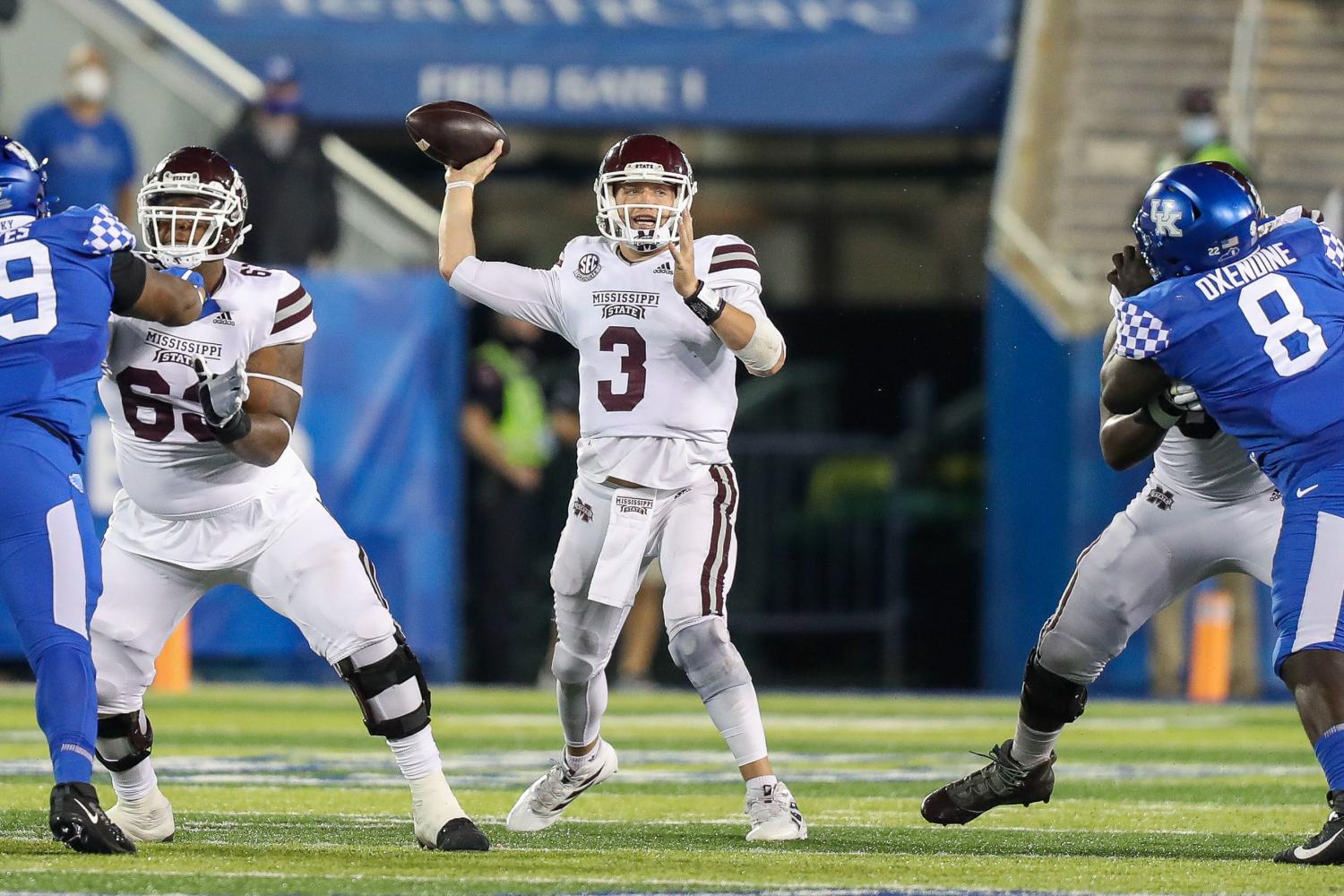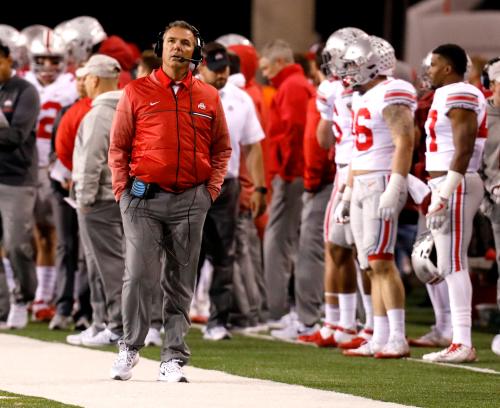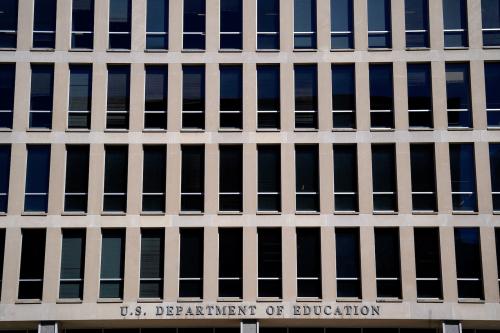This year’s college football season is shaping up to be vastly different than any other in history. While games are being played, crowds are exceptionally limited or nonexistent. Furthermore, there are simply fewer games—and there is no guarantee of a complete season for any school. The combination of these factors is costing universities tens of millions of dollars and upending the underlying business model of college sports. Universities across the country have already responded by ending many low-revenue sports. This has led to widespread lamentations about the decreased opportunities for intercollegiate athletes who play sports that cannot support themselves financially.
However, if we are serious about caring for intercollegiate athletes, we should begin by reconsidering the corrupt bargain at the heart of modern college sports—one that has been magnified by the pandemic. In a new National Bureau of Economic Research paper that we co-authored with Jordan Keener and Nicole Ozminkowski, we empirically investigate the economic business model of college sports. We find that the prevailing model rests on taking the money generated by athletes who are more likely to be Black and come from low-income neighborhoods and transferring it to sports played by athletes who are more likely to be white and from higher-income neighborhoods. The money is also transferred to coaches and used for the construction of lavish (and perhaps overly lavish) athletic facilities. With COVID-19 shutting off the money spigot, schools are being forced to publicly acknowledge that their athletic departments depend on regressively transferring money from athletes who grew up poor to those who grew up in richer households and to wealthy coaches.
This has led a variety of policy proposals ranging from paying players directly to allowing players to profit off their name and image, breaking a longtime requirement of amateurism in university athletics. Three states have passed legislation that would allow athletes to participate in a range of activities ranging from endorsements to autograph signings. In response to these widespread policy initiatives, the NCAA this week introduced a set of far more limited proposals that would allow college athletes to earn revenue from third parties. But it remains to be seen exactly how these policies would be implemented, and to what extent it would resolve issues of financial inequities for student athletes. Furthermore, these efforts fall short of the athlete’s bill of rights that was recently proposed by members of the U.S. Senate.
The business models of college sports
We begin by documenting that college sports operates under two distinct business models. These are documented in Figure 1, which shows the relationship between a school’s athletic department revenue and the percentage of that revenue that comes from the university. In the upper-left corner is a set of Division 1 schools that largely resemble the idealistic images of amateur student-athletes competing for school pride. These schools earn relatively low revenues overall, and a large amount of their financial support comes from the university.
A second set of schools—those in the lower-right corner—have exceptionally high revenues and nearly all of those funds are generated by athletic endeavors, activities such as ticket sales, television contracts, and merchandise sales. These schools are all members of the “Power Five” athletic conferences, a set of schools that have traditionally fielded high-quality athletic programs. From 2006 to 2016, athletic departments at these schools saw their revenue nearly double, rising from $3.5 billion to $6.7 billion.
This difference in business models suggests that optimal policy in this area should distinguish between these two distinct sets of schools when considering how athletes are compensated for their time and efforts. To that end, our subsequent analysis concentrates on the economics of the schools in these Power Five conferences. The athletic departments in these schools resemble commercial enterprises that are generating meaningful economic rents. However, the revenues are largely generated by a small set of athletes. We document that football and men’s basketball generate six times more revenue than all other sports combined. These sports, however, enjoy only 1.3 times more spending than other sports at the same school.
This difference between revenues and expenditures demonstrates how the funds generated by football and men’s basketball players fund all of the remaining intercollegiate sports at each school. We estimate that the money generated by football and men’s basketball causes: increased spending on money-losing sports; higher salaries for coaches and administrators; and increased spending on athletic facilities. Today, the average school in a Power Five conference supports 20 sports, but only two sports consistently pay for themselves, and the revenue generated by these two sports supports the seemingly ever-increasing salaries for coaches and athletic department employees.
Consider the teams playing the greatest college football rivalry game—the University of Michigan and Ohio State University. (Editor’s note: This fact is debatable. Authors’ note: No, it is not.) When these teams met in 2008, their coaching staffs earned $6 million and $5.7 million, respectively. Just 10 years later, these salaries grew to $15.5 million and $17.3 million—a roughly 300% increase. Even the strength and conditioning coaches for each team earned $600,000 and $735,000 a year, respectively. Conversely, the athletes on the field received no salaries for their efforts.
While we support opposite sides of this rivalry, we are united in agreement that this salary growth reflects a system that maximizes profits by limiting intercollegiate athletes’ compensation to no more than the cost of attending school. The schools share these excess profits with coaches, administrators, and money-losing sports.
Supporters of the current system offer several arguments in favor of the status quo. Some say it is the deal the athletes signed, without acknowledging that collusion among schools through the NCAA limits the options of young athletes. Others claim that supporting other sports, particularly those played by female athletes, has broader societal benefits. Some argue that college athletics is uniquely attractive to fans because of the disingenuous belief that the competitors are just like the other students. Finally, some argue the athletes are already paid because they receive athletic scholarships, as if paying someone any positive amount is sufficient.
A new model that shares revenue with athletes
These arguments overlook the fundamental injustice created by transferring revenue generated from two sports played disproportionately by Black athletes from poorer neighborhoods to sports where athletes are disproportionately white and from wealthier neighborhoods and to high-income coaches. To approximate the money at stake, we consider as a benchmark a hypothetical situation where athletes could collectively bargain to the same degree as their professional counterparts.
If players in football and men’s basketball received a similar share of revenue as NFL and NBA players—roughly 50% of sports-related revenue—then each scholarship football player would earn $360,000 per year and each scholarship basketball player would earn $500,000 per year. If wages by position reflected the relative earnings by position observed in professional sports, the starting quarterbacks would earn $2.4 million per year on average. Even the lowest-paid football players would receive $140,000 per year.
Such a system would create winners and losers. We would expect slower growth in coaches’ salaries and facilities spending, for example. After all, intercollegiate athletes are currently “paid” in part with ludicrously lavish athletic facilities, containing features such as lazy rivers and laser tag. Additionally, it may be difficult to continue to abide by Title IX regulations, which require schools to provide equal opportunities for male and female athletes.
Title IX has had numerous positive effects and addressed many clear, historical, gender-based inequities in scholastic athletics. This is true at both the college and the secondary school level. However, optimal policy must consider that equity is a multifaceted concern that involves not just gender, but also important issues such as race and income. When viewed in this light, we believe our estimates demonstrate that, even after one considers the positive benefits for female athletes, the equity of Title IX when applied to an athletic department primarily supported by the efforts for poorer Black athletes is questionable at best. Any effort to reform the NCAA must consider a more nuanced regulatory approach that acknowledges the regressivity and racial injustice that is central to modern college sports.
However, allowing some intercollegiate athletes to share in the fruits of the labor does not stand in the way of continuing to provide meaningful athletic opportunities for athletes participating in sports that currently generate negative net incomes. To illustrate this point, consider that much of the growth in athletic department revenues since 2005 is driven by the increasingly valuable media rights for football and men’s basketball. This includes both contracts with traditional networks like ESPN as well as the development of conference-owned channels, such as the Big Ten and SEC networks. This revenue growth is largely unrelated to the athletic success of other sports.
In Figure 2, we show a comparison between the average actual spending on women’s sports (the solid line) and estimated spending if the costs of these sports had only grown with inflation (the dashed line) for each school in a Power Five conference. This inflation-adjusted spending is an estimate of the resources necessary for a school to both provide athletic opportunities for female athletes, as well as increase revenue sharing for the athletes necessary to continue providing athletic opportunities for women’s sports at the 2006 quality level. For the average school, the difference in this spending amounts to approximately $76,000 per scholarship athlete in football or men’s basketball. This thought experiment demonstrates that there is ample revenue to both continue offering non-revenue sports at some level while compensating those responsible for the large growth in funds available to athletic departments.
The pandemic has pulled back the curtain on the ugly business of college sports. Its leaders would like to pretend it remains an amateur endeavor, but they only want to apply those cherished principles of amateurism to the athletes risking their health to generate profits, and not the coaches and administrators who financially benefit from the current system. Addressing this question is even more important as we ask college football players to risk their health to generate the money necessary to perpetuate this fundamentally inequitable system.
The Brookings Institution is committed to quality, independence, and impact.
We are supported by a diverse array of funders. In line with our values and policies, each Brookings publication represents the sole views of its author(s).









